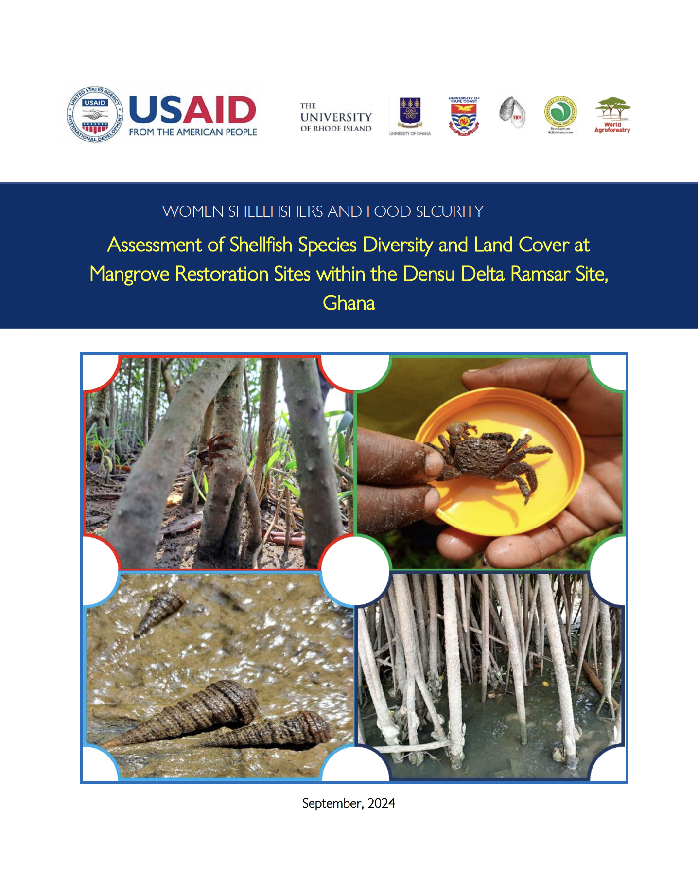Country
Profiles
Country
Networks
Country
Associations

This report presents the findings of a baseline study of land cover and shellfish species diversity conducted in January 2024 at two mangrove restoration sites within the Densu Delta; one site (Site 1) replanted in 2017 as part of the USAID/Ghana Sustainable Fisheries Management Project (SFMP) and another site (Site 2) replanted in 2023 through the USAID Women Shellfishers and Food Security project (WSFS). These restoration efforts were aimed at enhancing shellfish production to support the livelihoods of women shellfish harvesters and provide other ecological benefits. The Centre of Coastal Management of the University of Cape Coast conducted the baseline biodiversity assessment using various methods, including land cover surveys, shellfish sampling, and data analysis to establish baselines and inform future assessments of mangrove restoration impacts on shellfisheries biodiversity. Key findings from the land cover survey revealed that Site 1 predominantly consisted of mangrove cover, which accounted for the majority (59.4%) of the land cover in the 18 sampled quadrants. In contrast, Site 2 was dominated by grass cover (45.8%), with significantly less mangrove coverage (3.1%). Results of the current study show that the differences in land cover at the two sites may have considerable bearing on the development and diversity of the shellfish community at each of these sites. Seven shellfish species were encountered at Site 1, whereas Site 2 had four species. The purple mangrove crabs and hermit crabs were observed at Site 1 only. The West African mangrove oysters were found on the roots of the replanted mangroves at Site 1, where they constitute nearly 50% of the shellfish community with the highest mean density of 170 oysters per square meter. The overall higher species diversity and richness at the Site 1 compared to the newly planted Site 2, and the larger mean size of mud creepers at Site 1 compared to Site 2, is a function of time as the mangrove trees at Site 1 planted in 2017 have grown larger thereby providing habitat for expanded biodiversity. These findings highlight the benefits of the Densu Oyster Pickers Association’s (DOPA) mangrove reforestation efforts for improving the Densu Delta’s ecosystem and shellfisheries productivity, which eventually can result in improved food security and livelihood, among others. It is expected that shellfish diversity at Site 2 will also increase with time as the mangrove trees grow larger, and this will be confirmed through future monitoring. Most importantly, these observations provide a baseline for monitoring the development of replanted mangroves and changes in the land cover and shellfish fauna biodiversity over time.
- Author(s)
- Okyere, I., Chuku, E. O., Osei, I. K., Krampah, E. A., Adade, R., and Agboli, N. A.
- Publisher / Institution
- Centre for Coastal Management (West Africa Shellfish Knowledge and Outreach Hub), University of Cape Coast; Development Action Association, Ghana; and Coastal Resources Center, University of Rhode Island. Narragansett, RI, USA.
- Date published
